Fire alarm systems are modern means of automatic detection of a fire at the earliest stage of its occurrence.

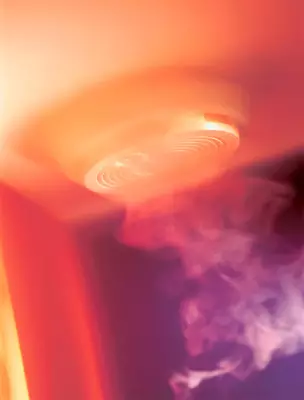
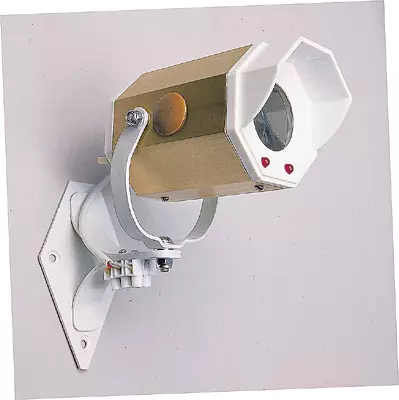
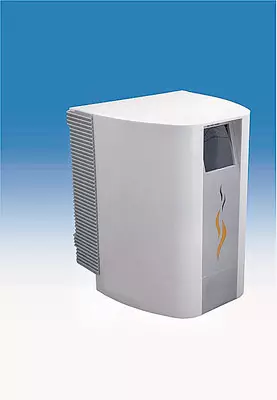
Laser smoke linear detector with receiver and transmitter - in one case- and reflector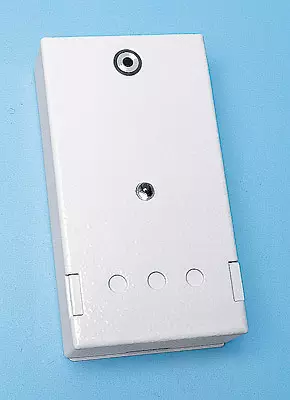
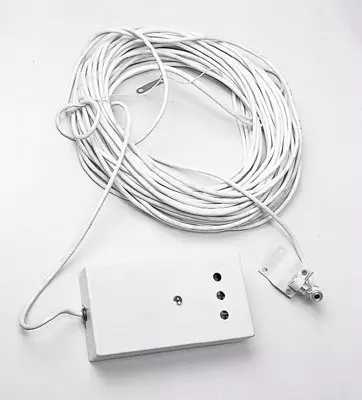
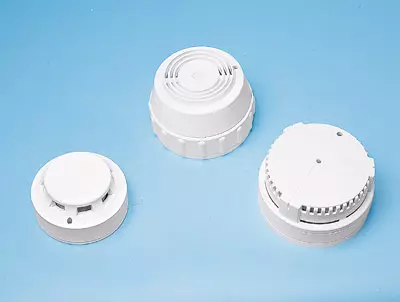
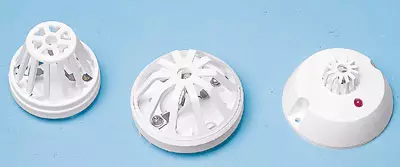
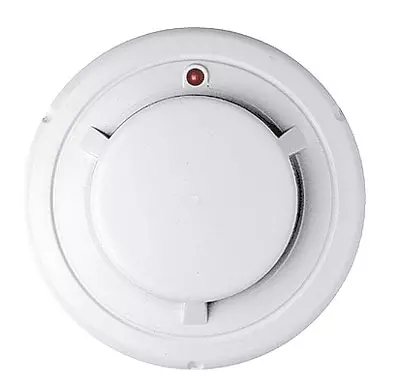
Point smoke "intellectual" detector series "Profi"
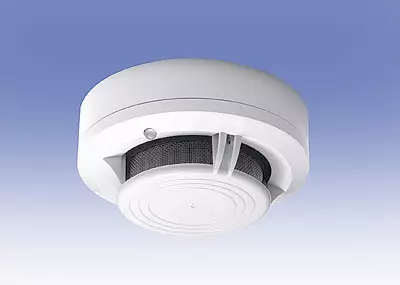
Combiro-Baths "Smoke-Heat" detectors - Address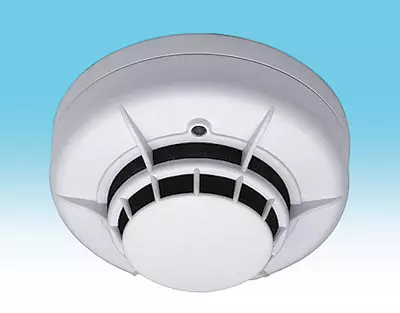
intellectual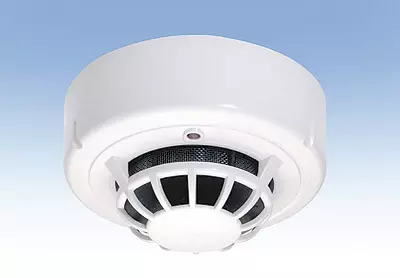
Bezadrescent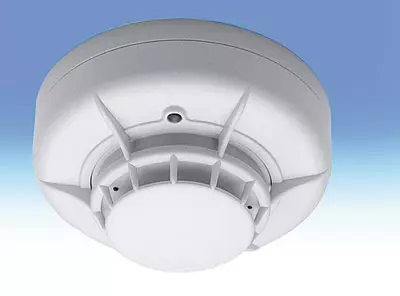
Thermal Maximum Differential Besadress Detector of the Eco Series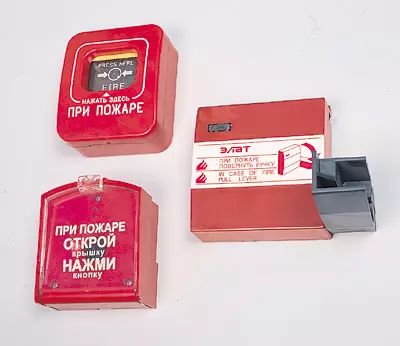
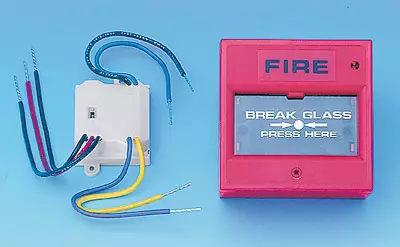
Address-analog manual detector of the Eco series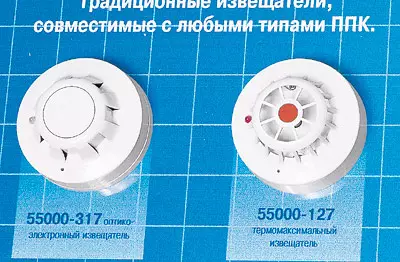
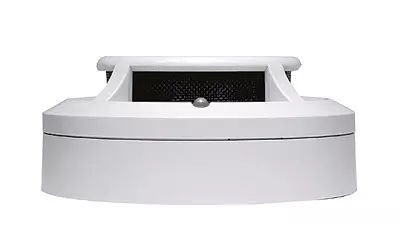
Address and analog detectors - spot smoke;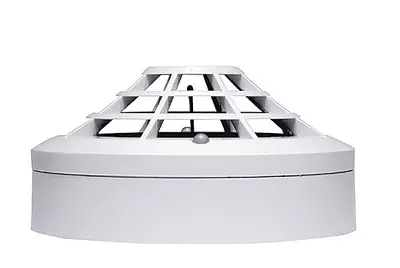
Maximum differential
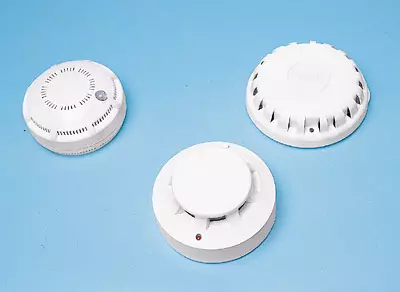
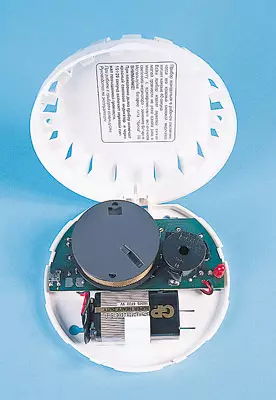
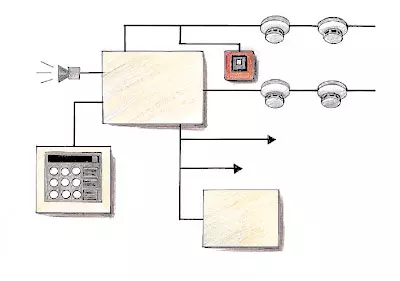
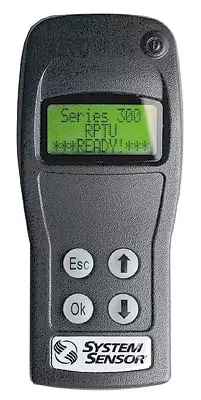
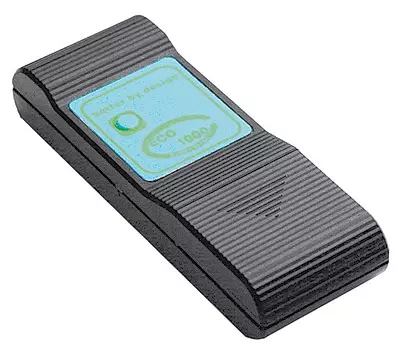
Laser tester for remote verification of the health of "intelligent" smoke sensors
In the previous issue of the magazine, we talked about primary fire extinguishing. But it should be put into action, only finding fire. Achto will happen if the starting fire does not reveal in time? That's right, a big and irreparable trouble will happen. Therefore, today we will talk about modern means of automatic fire detection at the earliest stage of its occurrence of fire alarm systems.
Who should detect a fire?
Extra 150 years ago, the most effective means of detection of fire was the fire calabed - the highest building in the city. With the alerts, it was even easier to run into the street and shout out loudly: "Fire!" All who will hear have had to run on his extinguishing, "who is with a bug, who is with a bucket."Naturally, these funds remained far in the past. In order to fix the fire at the earliest stage, when it is called fire, now modern detection systems and fire alarm systems are used (ATP). They are designed for round-the-clock control of the protected object and the owner's alert about the first signs of a fire or smoke. To create such systems, uses: devices detection - fire sensors (more correctly called their detectors), signal processing devices (receiving and control devices - PCP) and actuating equipment (alert tools). They produce them such firms as Esser (Austria), Texecom and Pyronix (United Kingdom), System Sensor (Italy), Securiton (Switzerland), Esmi (Finland), Nappo (USA), AdemCo- Division of Honeywell (USA), as well as domestic "Rubezh" (Saratov), IVS-TalkspetsAtomatika (Obninsk), NVP "Bolid" (Korolev), "Argus-Spectr" and "IRSETTER" (S.-Petersburg), Siberian Arsenal (Novosibirsk), "Radii" (Casli), etc.
Fire detector sensors
It is they are the main elements of a fire focus detection systems. First of all, the efficiency of the system operation depends on their sensitivity and noise immunity. Inhabitants, smoke, thermal detectors and open flame detection devices are usually used. As a rule, they are all "thresholds", that is, it is triggered in case of exceeding the specified value controlled parameter.
Smoke detectors. The smoke is the most characteristic sign of a fire at its earliest stage. Measuring the concentration of smoke in the air, the sensor and "concludes" about the presence of ignition. Smoke detectors are divided into point and linear.
Point Produce measurements in the place in which installed. Accidentally accommodation from point detectors use only photoelectric. Inside such a device, a measuring chamber with a light source and a photodetector is hidden. The smoke particles entering the chamber change the air light and dispel the light stream. These changes and catches the photodetector. But in different designs in different ways. It records the overall weakening of the light flux (if it is located strictly opposite the light source). Along the thread scattering (the photodetector is located at a right angle to the light source). The first of the instruments described are more sensitive, but less resistant to interference (for example, to dust) and need frequent maintenance. The second is slightly less sensitive, but more noise-resistant. They are mainly and used when creating ATP in private housing. It is usually attached under the ceiling, as hot gases and smoke rises up. Square controlled by one smoke detector can be up to 80m2. Even if the location was installed in which the sensor is installed is much smaller than this value, to increase the reliability of the ignition detection, it should be installed in it at least two fire detectors. When using suspended ceilings and gaskets for them, the power wiring must protect the undercase space with separate smoke sensors.
Let us discuss these questions on the example of point chimney detectors. The sensitivity of the sensors can be high, medium and low, but must be between 0.05 to 0.2 dB / m (it is precisely in such units recalculated on a fairly difficult formula into bulk interest, it is customary to measure the sensitivity, the standard smoke sensor should To work if the smoke at the site of its installation causes a weakening of light at a distance of 1 m per 1.1-4.5%). Extracting detectors have the ability to adjust the sensitivity, which is made by a special switch installed on the rear wall. It can be both a two-position (switches from the top immediately to the lower limit) and the three-position (switches from the top limit to the lower via the average, for example in the "Profi" series and Leonardo from System Sensor). It is better to choose a detector with a three-position regulator. Why? Customized to the upper limit of sensitivity, the device reacts to the minimum smoke content in the air and can "work" not only when smoking in the room, but also when the meat is frying or the toaster operation in the kitchen (almost these are the same "false responses"). The minimum sensitivity may not be enough. It seems to it that the sensor should work, and it is stubbornly "silent." Most likely, you will arrange an average level of sensitivity. The adator with a two-position regulator is it and deprived. Sensors of any type need periodic care, more precisely, maintenance. Why is it necessary? It is clear that evaporation and dust will be destroyed on the appliances under the ceiling. Moreover, we settle these "charms" not only on the housings, but also inside the measuring chamber, weakening the light stream to which the device is configured, and causing the so-called false response. On non-axes (firing in the air inside the camera) dust particles The sensor reacts in the same way as on the smoke. "False trigger" - the phenomenon for the owners is pretty unpleasant: nothing burns, and the sensor persistently signs: "Fire!" At the same time, the owners are nervous and break the head: "And what if something burns in the house, and we do not notice ?! It would be necessary to check again!" To prevent dust from entering the measuring chamber, manufacturers protect it rather complex, almost a labyrinth design and complicate the geometry of the case, thereby reducing the likelihood of "false positives". Sex dust, naturally, it is necessary to periodically delete. But if you won't worry, it is not easy to remove anything from the housing, then it is quite difficult to remove it with a labyrinth measuring chamber. Agriched optics and suppressing, it is possible to break the alignment (optics in this case use a very miniature)In general, it is better to charge the care of specialists who will periodically come to the house.
Linear smoke detectors. Consist of two elements, externally reminiscent of video surveillance cameras, - emitter and receiver-converter. They are installed against each other on the opposite walls of the room ("IPDL" from Polyeservis, the price is $ 95; "SPEK-2210" from "SPEK", price- $ 230; "6424" from System Sensor, the price is $ 540). In the early time, models appeared in which both elements are combined in a common case - in this case, in contrast of the emitter, there is a reflector ("6200" and "6500" from System Sensor). The emitter can be either infrared or laser, working in the visible range of red light. The appearance of smoke in the space between the transmitter and the receiver (or between the transceiver and the reflector) causes a weakening of the received light flux. The magnitude of this weakening and fixes the receiver-converter. And in case of exceeding the installed threshold, the "fire" signal generates.
Faithful sensors are beneficial exclusively for large rooms, because they are found in a zone in a zone from 10 to 100 m and a width of 9 to 18 m (that is, they provide control of the area from 90 to 1000-2000m2). In general, one linear detector is quite capable of replacing a dozen point, which may be beneficial not only economically, but also from the point of view of the design of the room. But there are disadvantages. The response time of devices depends on the volume and even the configuration of the room. "False trigger" can cause sharp changes in direct and reflected light, lightning flashes, as well as a change in the mutual position of parts.
Heat fire detectors. Sensitive elements of thermal detectors can be: bimetallic plates (for example, in "IP-103-5" from "Kombstroyservis"; "IP 101-1A" from the "Siberian Arsenal"), semiconductor thermistors, etc.
On the principle of operation, thermal detectors are divided into passive (contact) and active (electronic). Passive does not consume electricity and function as follows: when the room in the room reaches the critical (order 70c), the sensitive element either produces a certain signal (due to the thermoelectric effect), or breaks / closes the contact of the electrical circuit, thereby feeding the alarm. Active devices consume electricity, but give information not only to achieve the critical temperature in the protected area, but the main thing and the change in the rate of increasing temperature. They are called differential detectors. Inside their housing there is a not one sensitive element, but two is directly contact with the external environment, the other is hidden inside the housing. If the temperature during fire grows quickly, the device fixes the difference in the readings of sensitive elements and sends an alarm to the PCP ("Mac-DM" from NPP "Specific format", Moscow, the price is 215 rubles; "IP 115-1" from " Magneto-contact ", Ryazan, price- 315 rubles;" 5451E "from System Sensor). If the temperature grows slowly (then the temperature of the elements varies the same), the device fixes the threshold value excess and also sends an alarm.
As a result, if the passive thermal detectors are suitable only for detecting an open flame fires, accompanied by a sharp exceeding the threshold temperature value (triggered when something is already just burning), then differential alarm is given, when there is no open flame, and the temperature is only beginning Grow, but with "unacceptable" speed. This explains the fact that passive sensors are recently used in the alarm systems in less often (and this is despite their low cost - 15-20 rubles). Consumers prefer sensors even more expensive, but triggered at an earlier stage of fire-differential. They are usually used where the flue fire detectors would give false alarms, for example in kitchens, in shower, smoking rooms, etc. For premises such as boilers, where a rapid increase in temperature is commonplace, the threshold detectors at a temperature of 70C- Differential detectors here will give false alarms.
Optical open flame detectors. It is clear that any field of burning is the source of optical radiation in the range from infrared to ultraviolet. Detection of such radiation using a phot-resection device having a high spectral sensitivity in an ultraviolet or infrared region, but insensitive to the visible part of the spectrum, and is the task of optical open flame detectors.
On sale you can find mainly infrared optical instruments (for example, a series of sensors "Pulsar" from KB "Device", Yekaterinburg, price - from 1360 to 2200 rubles; "Spectron" from "NGO Spectron"). The sensor in them can be both mounted to the receiver-converter and remote. In the last case, the sensor is installed directly in the controlled zone and is connected to the receiver installed outside it, fiber optic cable (length up to 20 m).
Optical detectors are minorizing devices, with minimal fire detection time. Detection angle - 90-120, range - from 13 to 32 m. They can detect both glowing foci and open flame. Their disadvantage is that if the bargaining is overshadowed by building elements or furniture, the detector will not fix it. The applications are indispensable where the rapid appearance of the flame is possible without smoke (garages, storerooms, room with electrical equipment). For example, in garages where it is possible to fire gasoline and other petroleum products, at least two such devices should be installed, so that the car in the center does not catch the flame.
Combined detectors There are a combined device of two sensors in one-housing controlled by one microcircuit. For example, the detector "IP212 / 101-2" series "Eco" from System Sensor (the price is 320 rubles) combines the functions of the smoke optical-electronic and thermal most differential detector, due to which it works with any fire (as a co-afraid, so and smoky, but with an increase in temperature). It should be noted that the combined detectors of this type are in recently all recently popular, since consumers are eliminated from the need to mount two types of sensor and heat in one room (such a need often occurs, for example, in garages). It is worth such a device, naturally, more expensive than separately smoke or thermal, but cheaper than both, combined (smoke "IP212-58" - from 227 rubles, thermal "IP101-23" - from 217 rubles).
On the one hand, the combined detector is good, since it allows you to detect fires of various types, both smoldering and open flame, but smokeless. And in general, the smaller the devices installed, the less they need to be serviced. The sides, as you know, the reliability of any combination devices is always lower than monofunctional. So if you acquire a combined sensor, then highly reliable and from a well-known company.
Manual detectors - These are "alarm buttons" that serve to feed the fire signal "manually" (for example, if it is detected before "triggering" sensors of the alarm system). They are installed on evacuation paths (in corridors, aisles, on stair cells, etc. at an altitude of 1.5 m from the floor level) at least one per each of the paths, and if necessary, in separate rooms. Mounted buildings Manual detectors must be on all the staircases of each floor (NPB 88-2001 *). The locations of their installation must have artificial lighting.
Autonomous detectors. It is possible to create an elementary fire alarm by installing autonomous flue detectors, for example, one by each room (if small). Autonomous These devices are called because within each of them there is an independent power source (Croon type battery, "Corundum" - 9B), which must be changed periodically (about once a year). But the system is absolutely independent of the presence of a supply voltage in the network (it simply does not need it). In addition to the battery, a sensitive element (smoke sensor) is hidden inside the housing and an unshaooter (siren), a sound with a volume level of 85-120 dB. An insister after the sensor is triggered will be "screaming" until you interfered or the battery will not sit down. Despite the fact that autonomous detectors are somewhat more expensive than ordinary ("traditional"), in which there is no power source, nor sirens, the fire alarm system based on autonomous sensors has a minimal cost, since it does not have wires, receiving and control devices and necessary for them. Works of the backup power system. The only type of care that autonomous detectors require is periodic purge from dust. The disadvantage is that each sensor works in itself and, being at the far end of the house, you can not hear the alarm.
Until recently, autonomous detectors of foreign production only were available: Dicon, BRK - $ 20-25, as well as several Chinese models, approximately $ 15. In addition, their serial edition has mastered the domestic industry: "IP212-50M" from "Rowzha" (Saratov), the price is 420 rubles; "DIP-47" from "Agata" (Obninsk), the price is 435 rubles, and others. And, according to experts, these models are not inferior to import and even exceed them. For example, the device "IP212-43" ("DIP-43") from "HalluspetsAtomatics" is not one, but several types of light and sound signals- "ATTENTION", "FIRE", "External alarm", for which it is possible to objectively Assess the situation, not yet seeing what happened. In addition, it gives a signal that the battery was discharged. Also on sale you can find autonomous co-production detectors. For example, the firms "Krilak" (Yekaterinburg) and Kidde Safety (USA) produce a fire offline de-9 detector, price- $ 18.
More "advanced" model of autonomous devices, connecting which by telephone (copper) wire can be obtained to obtain a signaling system (but without a control panel). The operation of one sensor in it causes the rest of the rest. This, for example, detectors such as "EI 100C" (EI Ltd, Ireland, $ 17), "Dip-43m" ("IVS TalkspetsAvtomatika", the price is 576 rubles.) And others. Signal of such a system you are guaranteed to hear in which There would be no room. This is a plus. The minus is to deal with rumor, where it was the fire that happened, it is difficult. After all, "buzz" immediately all!
Fire alarm systems
Usually, the fire alarm systems consist of the detector sensors listed above the types, as well as the mandatory receiving and control panel (device) - the PCP receiving their signals. Such systems of specialists are customary to call traditional. For some time, three main types of such systems are distinguished: non-educational, address, address-analog.Non-educational systems Consist of threshold (flue, thermal, flames) and manual detectors connected to the PCP with a wire (it is also called a line or loop). Sensors do not have their own email address, which would be reported on the remote. As a result, when one of them is triggered, it does not notice its number, nor the room where it is. Only the loop number (lines) is recorded, on which the sensor has been installed. A results of the host to understand the situation, should quickly inspect all the premises protected by this line. To facilitate the determination of the location of ignition, try to lay on one line in each room. But this path (increase in the number of lines) is not always suitable, since significantly complicates the wiring scheme and increases the cost of installation work. That is why the use of non-educational systems is considered appropriate only for small objects (less than 20 rooms).
In the simplest Address systems In the threshold detectors, the so-called targeted module is embedded, which is translated in the "Fire" mode of its loop code on the PCP. According to this code, a specific signal of the signal is defined, which increases the response to it. Such can be said, the cheapest method of transformation of the non-addressed system in the address (for example, the "C2000-AR1" module from NVP "BOLID", the price is $ 10). Another advantage of such a system is not to be carried out on one line in each room, but to create extended lines, saving the wire and work of installers. However, an indicated detector cannot control its state and transmit a "Fault" signal to the PCP, and when the address module is output, the PCP ceases to receive signals from the sensor. Polls address systems Use another type of PCP, and the connection of the detector becomes two-way. The PCC not only accepts signals from detectors, but also automatically tests for the presence of communication with them and their serviceability (performed every few seconds). The result is significantly increasing the reliability of the ATP, and you can always be sure that the sensors are working and work on time. Yes, and use the address-addressing systems easier for the owners and installers. For example, the temporary removal of one of the sensors (repair, prevention) does not cause a failure of the entire loop-PCP simply notes with the next survey that the sensor is missing. In addition, the questionnaire systems allow you to form not only the linear, but also branched stumes (with the number of sensors of order 100), which in some cases it allows you to simplify, which means that the maintenance work should be reduced. To work in such systems, detectors can already be offered not only with an accurate three-position setting of the sensitivity level, but also with automatic dummy dust compensation (for example, the Leonardo series sensors from System Sensor, which manufacturer calls "intellectual").
Change N 4 of 20.11. 2000 K SNIP 2.08.01-89 * "Residential buildings"
3.21. The premises of apartments and a hostel (except the bathrooms, bathrooms, shower, ware, saunas) should be equipped with autonomous optical electronic flue fire detectors, relevant to the requirements of the NPB 66-97, with the IP 40 protection category (according to GOST 14254-96). Detectors are installed on the ceiling. It is allowed to install on the walls and partitions of rooms not lower than 0.3 m from the ceiling and at the distance of the upper edge of the sensitive element of the detector from the ceiling of at least 0.1 m.
Snip 31-02-2001 "Houses residential houses"
6.13. Houses are three floors high and more should be equipped with autonomous optical electronic flue fire detectors, relevant to the requirements of NPB-66- 97, or other detectors with similar characteristics. On each floor of the house should be installed at least one fire detector. Smoke detectors should not be installed in the kitchen, as well as in bathrooms, shower, toilets, etc. Rooms.
"General provisions on the technical requirements for the design of residential buildings with a height of more than 75 m"
(developed by the GUP NIAC Moskom- architecture, approved by the Government of Moscow). We will not quote this document, but let's just say that in buildings from 75 to 100 m in buildings, the address systems of the fire alarm system must be installed, and in buildings with a height of 100 to 150 m-address-analog, i.e. systems that make possible Management of evacuating tenants, for example, with the help of light and sound signs installed on stair cells. Automatic fire extinguishing should be arranged over the entrances to the apartment. In deputyers necessarily the presence of primary means of fire extinguishing and fire cranes in the bathrooms, bathrooms, corridors. In addition to the fire alert system, there is a video surveillance in the houses (on stair cells, to control the evacuation stroke).
Address and analog system. The detector not only periodically polls the PCP, but also in response to the value of the parameter controlled by it: the temperature, the concentration of smoke, the optical density of the medium, etc., that is the PKP here is the center for collecting telemetry information. According to the nature of the change in the controlled parameters reported by different detectors established in the same room, it is the PCP, and not an detector (as in the case of targeted and non-address systems) forms a fire signal, which increases the reliability of determining the ignition. There is a address and analog system and a few more advantages in comparison with the questionnaire: the number of loops can be reduced to one-ring (it is sometimes called the loop) to which up to 99 automatic detectors + 99 manual detectors, address notifiers and control modules are connected to ventilation, smoke removal, etc. The failure of the sensor or the wire break will not break the system operation, it will continue to interrogate the sensors as one side of the cliff, and according to another, informing those who exploit it, which sensor has failed or between which sensors there was a breakdown. "Thresholds" of sensor triggering can be set for each room and even change depending on the time of day, the day of the week, etc. For example, during the daytime, to eliminate false positives from cigarette smoke, the sensitivity of certain flue detectors can be automatically lowered, and in the night The clock is re-installed at maximum (such an algorithm is implemented, for example, in the alarm system with the "200" series sensors from System Sensor).
Receiver-control devices (panels) - PCP
It is the PCP that controls the detection lines (loops) with the sensors installed in them, ensure the indication of the detected faults and the fire and command the lines of sound and light bells (if there are those in the system). PCP feeds from the AC voltage of 220 V, but uses the internal voltage 12 or 24 V. In case of the disappearance of the network voltage, it is supplied with backup batteries (1 or 2 batteries 12 V).
In order to be clear how the system functions, let's look at what happens when triggered, for example, a smoke detector. Hope it consumes current no more than 100 μA. But, catching smoke, turns into anxious state, includes LEDs, thereby increasing the current consumption of up to 30 mA (this value depends on the design of the console). PCP, detecting increased current consumption, includes LED fire indicators and activates sound alarm. The fire detector remains fixed in the "alarming" state, even if there is no longer feeling smoke, which guarantees the identification of the smoke zone in case the smoke detector falls only periodically. Alarm "signal can be" reset "only with the PCP by removing the power from the detection line by pressing the special button. Cleaify's vaccine systems corresponds to its own "reset" button.
For each of the systems (forbidden, address, address-analog) applies their PCPs, characterized by a set of functions performed. If in non-educational systems, the instruments simply mark the line on which the trigger occurred (as in the "Signal-20 and - 20P" from NVP "BOLOLAD", the price is 2350-2720; "Granite-24" from "Siberian Arsenal", price - 2800 rubles; "PPK-2" from "IVS TalkspetsAvtomatika", etc.), then in address schemes provide automatic verification of the health of lines and sensors ("Raduga-2A" from "Argus - Spectr", the price is from 6340 rubles. ), and in address and analog systems even detect the location of the line ("Radugow-3" from the "Argus spectrum", the price is from 15900 rubles, as well as ESSER devices (ESSERTRONIC 8000C) and Apollo).
The PCP for each of the listed systems can be divided into devices of small, medium and large "information capacity". It depends on the number of connected loops, sensors and functions performed. And to each specific object (home, apartment), the most suitable devices are selected. What to advise here? Perhaps it is always better to prefer the device from a large manufacturer (foreign or domestic), which has long been present on the market. What is the device to choose from an assortment of a particular manufacturer, must define a firm mounting the alarm system. But here we allow yourself some advice.
First, it is better to choose how now it is customary to say, "intuitive" PCP. That is, so that everything that is highlighted on his panel you understood even in half a heart. And so that they can quickly and easily produce any necessary actions with the device, because it will be no time to read the instructions for its control during a fire.
Secondly, it is always better to prefer the PCP, so to speak, with a slight margin. For example, with the possibility of connecting another loop without changing previously laid lines.
Thirdly, the "smart" device in case of a fire must automatically fulfill a number of necessary actions for you, about which the owner in the heat of fire fighting may well forget. For example, disconnect the supply and exhaust ventilation to prevent the spread of fire along this system, de-energize the basic electrobrivers, etc.
Owners
This concept is hidden all the executive instruments that will start working on the PCP team after the fire detection. In the intelligent case, these are sound, light or light-sounding alarms (simply speaking, "sirens", "Revubules", "Flashing" and "Forkka"). Even very powerful anewners placed inside the dwellings will warn you about the impending trouble. More powerful devices located on the walls, roof or in the attic of a country house will bring a signal about the fire before the universal information. But it is only necessary that someone who will perceive (will see, hear) a signal about the fire filed by the system, and will quickly respond to him, it will go out to find out what happened, and in the case of the actual fire extinguish it or causes the fire team. And, it means that this option is alert only for your own house in the cottage settlement with centralized security. Yes, and then with a big tensioner, too, it is not easy to immediately understand, in what kind of building is Siren. Neither for an apartment building, nor for the country village or garden partnership, in which there is no centralized security, this method of alert does not fit completely.In apartment buildings and television connected cottage villages, you can withdraw a signal from home PCP on the security console, and let it take appropriate measures. It is only necessary to equip it with the corresponding console.How to organize sending a message about a fire from the fire alarm system installed in the house, if there is no telephone connection? And in this case there are a number of devices. For settlements in which there is protection, special communication systems for radio channel are produced. All houses in this case are equipped with a device that can transfer a pre-recorded voice message, and the post of protection to the receiving device to the appropriate number of houses. (The question of sending messages about the incidents is being solved in the same way if the country house is protected by it. The difference is only in the power of the transmitting device.)
If there is no own security in an apartment building or village, but they are located in the GSM cellular communication area, you can use the devices that send an SMS message about the incident. These devices are called dialing. They are capable of both connecting to any security and fire alarm, and used as an independent receiving and control device (determined by the design). When the alarm is triggered, the device sends an SMS signal to any (there may be three or more of them) specified by the owner of the cell phone number (you, relatives, friends, neighbors, etc.).
Perhaps the most common currently of this type is GSM-UO-4C ("BOLID", the price is about $ 130). The cost of installing a turnkey system based on it costs about $ 400. A significant disadvantage of the system is that it can only act in the heated room (operating temperature, from +1 to + 45c). Similar on the principle of operation, but more modern devices offer companies such as Pyronix (Matrix series devices, price - from $ 30 to $ 120, "Formula of the Formula of the Forsc-GSM-from $ 450), etc.
Fire alarm system costs (ATP)
The most cheapers of fire alarm systems based on the equipment of domestic production (the circle of manufacturers we already denote). So, the point smoke sensor costs from 160 to 400 rubles, smoke linear - from 2980 to 7180 rubles, thermal passive - from 11 to 60 rubles, differential, from 150 to 350 rubles, optical open flames - from 1350 to 5600 rub. etc. Domestic sensors generally coped with their task as a whole, but, as a rule, we are somewhat inferior to imported analogues in reliability and aesthetics.
Fire alarm systems of the average price level are usually created on the basis of sensors and contact structures of such well-known foreign firms, like Ademco, System Sensor, Nappo, Texecom, Pyronix. Thus, the point smoke sensor in this price category will already cost $ 15-30, smoke linear - in $ 100-500, differential - in $ 10-20, etc.
Expensive ATP includes address systems. Most often, they are built on specialized control panels and sensors of Esser, Esmi, Honeywell, Securiton, etc. Vaid category Point smoke sensor costs $ 30 to $ 100, smoke linear - from $ 500 to $ 1000, differential - from $ 30 to $ 60, Optical Open Flame - from $ 200 to $ 500.
Despite the fact that the beneficial detectors are cheapest, the installation of a complex ATP based on them can do quite expensive. Address detectors are at least 50% more expensive than chaasadres, but the installation of the ATP on them can do cheaper. Thus, according to a number of firms surveyed by us, for a building with an area of more than 500m2, the address system is already cheaper with an email. And the larger the area, the more money winnings. True, not all specialists who participated in our survey agreed with this statement. Some rightly noticed that it was not so much in the area as in the amount of protected premises and their arrangements that determine the configuration and the branchedness of the system being created. (And immediately offered several non-like diagrams for a large house of 20 rooms using easy-to-control PCPs that are not more expensive. , optimally suitable for both the technical parameters and the price. And in order to get several alternatives and choose the best one, it is worth contacting not one firm, but at once to several.
But with the fact that in the maintenance of address systems is cheaper, everything agreed. Cheaper is already because they themselves find a malfunction - it remains only to eliminate it.
The highest cost has equipment for address-analog systems. If, for example, the address threshold detector from the company System Sensor will cost an average of $ 15, then the detector for the address- analog system from Apollo is already $ 50, and from ESSER-$ 90. The high cost of detectors, and therefore, and the systems collected on them are still abandoning their application in urban apartments and private houses.
By installing the fire alarm system, you must be prepared for the fact that the costs will not be limited to this. It will be necessary regularly (at least once every six months, and better than a quarter) to pay a challenge of a specialist for preventive work (a list of necessary actions and their frequency is indicated in PCP and detector passports). For small ATP, the cost of such works is approximately 1000 rubles, for complex, naturally, more expensive, but, fortunately, not directly proportional to the cost of the system. For their holding, it is better not to take place - you can lose guarantees (it is usually given for a year, after which a contract for post-warranty service is the expiration).
And the last thing I must say at the end of this part of the review. The electronic protection sphere of an individual house fire alarm is usually an integral part of the security and fire system and is controlled by a single receiving and control device. Working in such security systems the devices are already called differently ppkop, that is, the receiving-control stop-fire fighters. But today we are not discussed today, unfortunately, the review of the review is not enough.
The editorial board thanks NGO "Pulse", a group of companies "Formula Safety", Alliance "Complex Security", as well as "Systems Sensor Fair Detectors" for help in the preparation of material.
Interiors, Redevelopment, Repair of apartments
